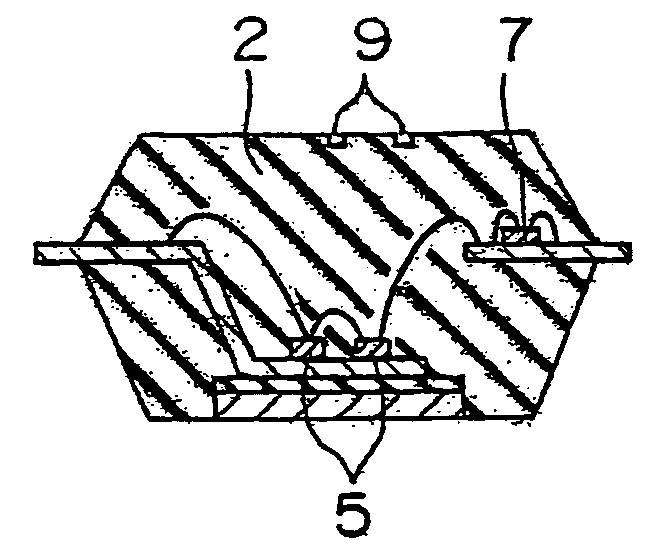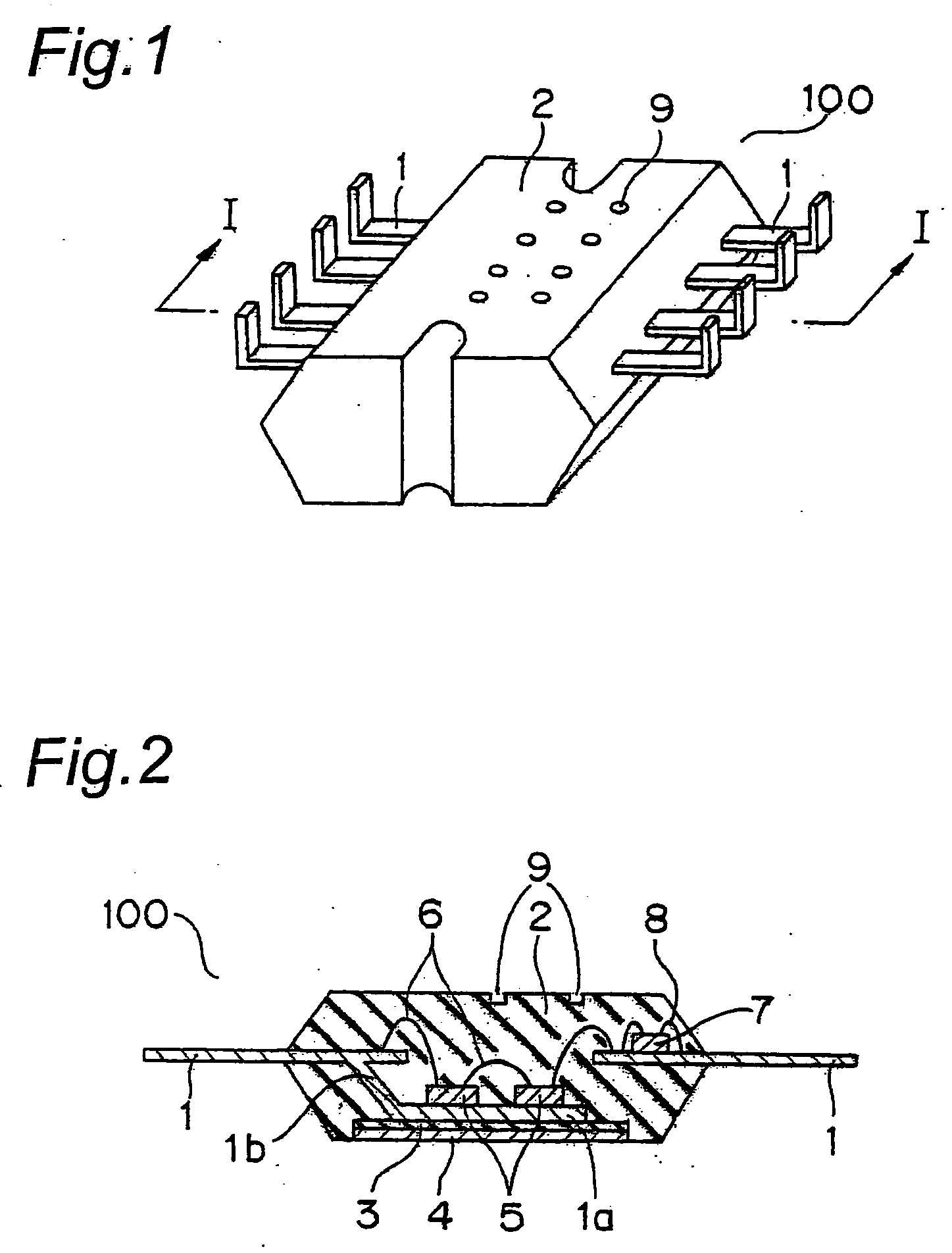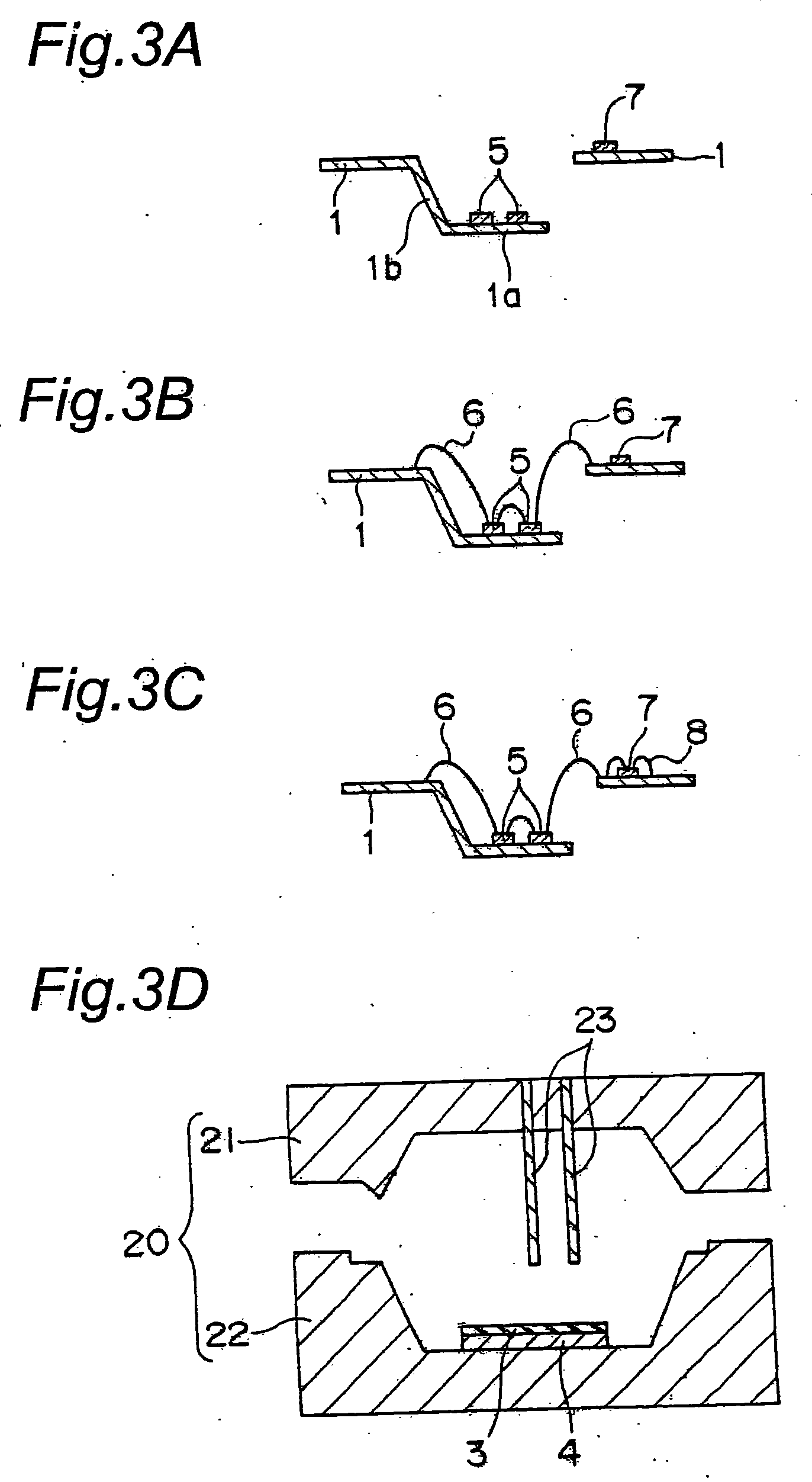Method for producing semiconductor device and semiconductor device
a technology of semiconductor devices and semiconductor components, which is applied in the direction of semiconductor devices, semiconductor/solid-state device details, electrical devices, etc., can solve the problems of deterioration of insulating properties, reduction of resin thickness in these portions, etc., and achieve excellent insulating properties and enhanced heat dissipation properties
- Summary
- Abstract
- Description
- Claims
- Application Information
AI Technical Summary
Benefits of technology
Problems solved by technology
Method used
Image
Examples
embodiment 1
[0019]FIG. 1 is a perspective view of a semiconductor device according to this embodiment of the present invention generally denoted at 100. FIG. 2 is a cross sectional view of the semiconductor device along lines I-I in FIG. 1.
[0020] As shown in FIG. 1, the semiconductor device 100 has a resin-molded package structure and includes a mold resin 2 on the both sides of which a plurality of metal frames 1 are disposed. The mold resin 2 is preferably of an epoxy resin.
[0021] As shown in FIG. 2, the semiconductor device 100 includes the plurality of frames 1. One frame 1 seats an IC chip 7 such as a logic chip. The other frame 1 includes a die pad portion 1a and a step portion 1b, and the die pad portion 1a seats power chips 5 such as an IGBT and an FW Diode. The power chips 5, the IC chip 7 and the frames 1 are connected with each other by bonding wires 6 and 8 of gold, aluminum and the like, allowing the IC chip 7 control operations of the power chips 5. One or more power chips 5, IC...
embodiment 2
[0049]FIG. 6 is a cross sectional view of a semiconductor device according to this embodiment of the present invention generally denoted at 200, taken along the same direction as the direction I-I in FIG. 1. In FIG. 6, the same reference symbols as those in FIGS. 1 and 2 denote the same or corresponding portions.
[0050] In the semiconductor device 200, projections 29 are formed instead of the dents 9, at the same positions as those of the dents 9 of the semiconductor device 100. The projections 29 are formed as the cap pins 23 are pulled out from the upper metal mold 21 until the tips of the cap pins 23 are positioned slightly above the top surface of the mold resin 2 and the cap pins 23 are held as such at the step 6 of the producing method of the semiconductor device 100 described above with the sealing resin 12 hardened to a certain extent.
[0051] Since the semiconductor device 200 includes such projections 29, the strength of the mold resin 2, especially the bending strength, im...
embodiment 3
[0052]FIG. 7 is a cross sectional view of a semiconductor device according to this embodiment of the present invention generally denoted at 300, taken along the same direction as the direction I-I in FIG. 1. In FIG. 7, the same reference symbols as those in FIGS. 1 and 2 denote the same or corresponding portions.
[0053] The semiconductor device 300 has a structure that the dents 9 of the semiconductor device 100 are buried with a resin 30. The semiconductor device 300 is otherwise the same in structure as the semiconductor device 100. Burying with the resin 3 is accomplished using a potting method for instance.
[0054] As compared with a structure that the dents 9 are not buried, the strength and especially the bending strength improves in the semiconductor device 300.
PUM
 Login to View More
Login to View More Abstract
Description
Claims
Application Information
 Login to View More
Login to View More - R&D
- Intellectual Property
- Life Sciences
- Materials
- Tech Scout
- Unparalleled Data Quality
- Higher Quality Content
- 60% Fewer Hallucinations
Browse by: Latest US Patents, China's latest patents, Technical Efficacy Thesaurus, Application Domain, Technology Topic, Popular Technical Reports.
© 2025 PatSnap. All rights reserved.Legal|Privacy policy|Modern Slavery Act Transparency Statement|Sitemap|About US| Contact US: help@patsnap.com



